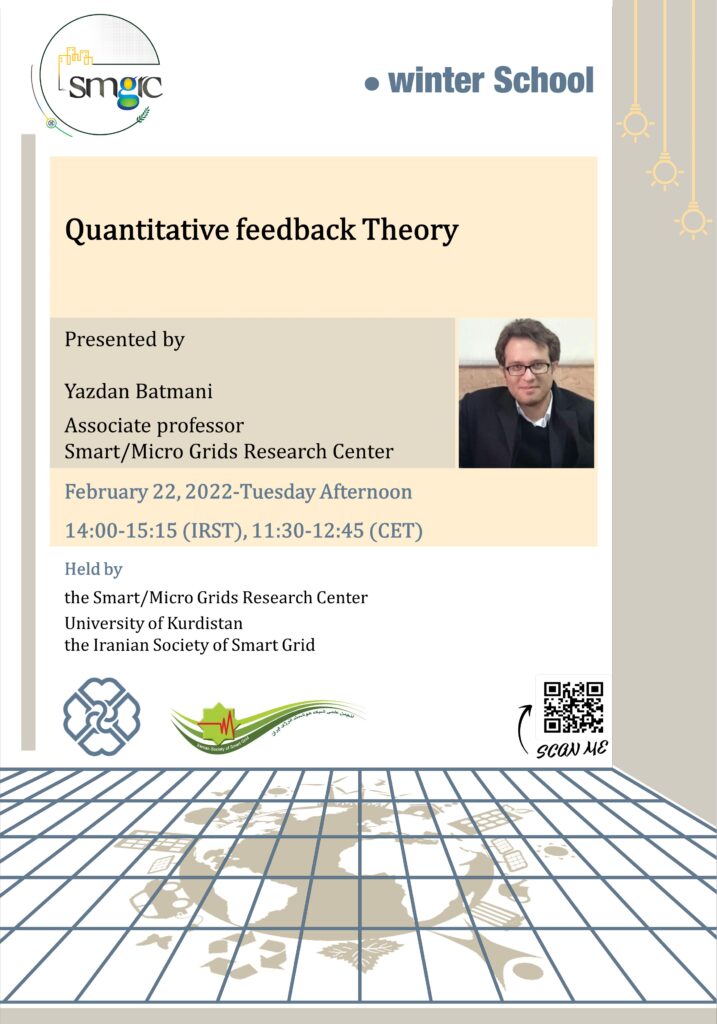
About the Presenter
Yazdan Batmani received the B.Sc. degree in biomedical engineering from the University of Isfahan, Isfahan, Iran, in 2006, and the M.Sc. and Ph.D. degrees in control engineering from K.N. Toosi University of Technology, Tehran, Iran, in 2009 and 2014, respectively. From 2015 until 2019, he was an Assistant Professor with the Department of Electrical Engineering, University of Kurdistan, Sanandaj, Iran where he is currently an Associate Professor. His current research interests include nonlinear control systems, networked control systems, applications of control theory in Diabetes technology, power systems, and microgrids.
General Information:
This course will be useful for …
The aims of this course are …
Where and how you can use this knowledge?
The quantitative feedback theory (QFT) is one of the most powerful techniques to design robust controllers in the frequency domain using the Nichols chart. In this method, the feedback is used to reduce the adverse effects of the uncertainty and provide some predefined performance specifications, simultaneously. This method has been successfully used in many practical systems and interesting results have been reported. Using the QFT, it is possible to design robust controllers for many classes of dynamical systems such as stable and unstable systems, minimum-phase and non-minimum-phase systems, time-delay systems, and multi-input multi-output (MIMO) systems. On the other hand, although new powerful control algorithms have been proposed and implemented for real systems, the PID controllers are still the most commonly used control strategy in practical industrial applications. The main reason for this popularity is the simplicity and flexibility of these controllers. The QFT can be used to tune the parameters of the PID controllers to achieve robust stability and performance. It should be mentioned that a robust PID controller has usually a much lower order than other robust controllers designed by well-known techniques.
The main objective of this lecture is to present the background of the QFT so that students can apply this theory to design general controllers regardless of the applications. After being familiar with the technique, they will be able to tune PID controllers, as basic but effective controllers. Examples and related toolboxes in Matlab will be used to convey a better understanding of the QFT. Due to the simplicity of the QFT, undergraduate and postgraduate students who are familiar with the linear control theory can participate in the lecture.
Part A